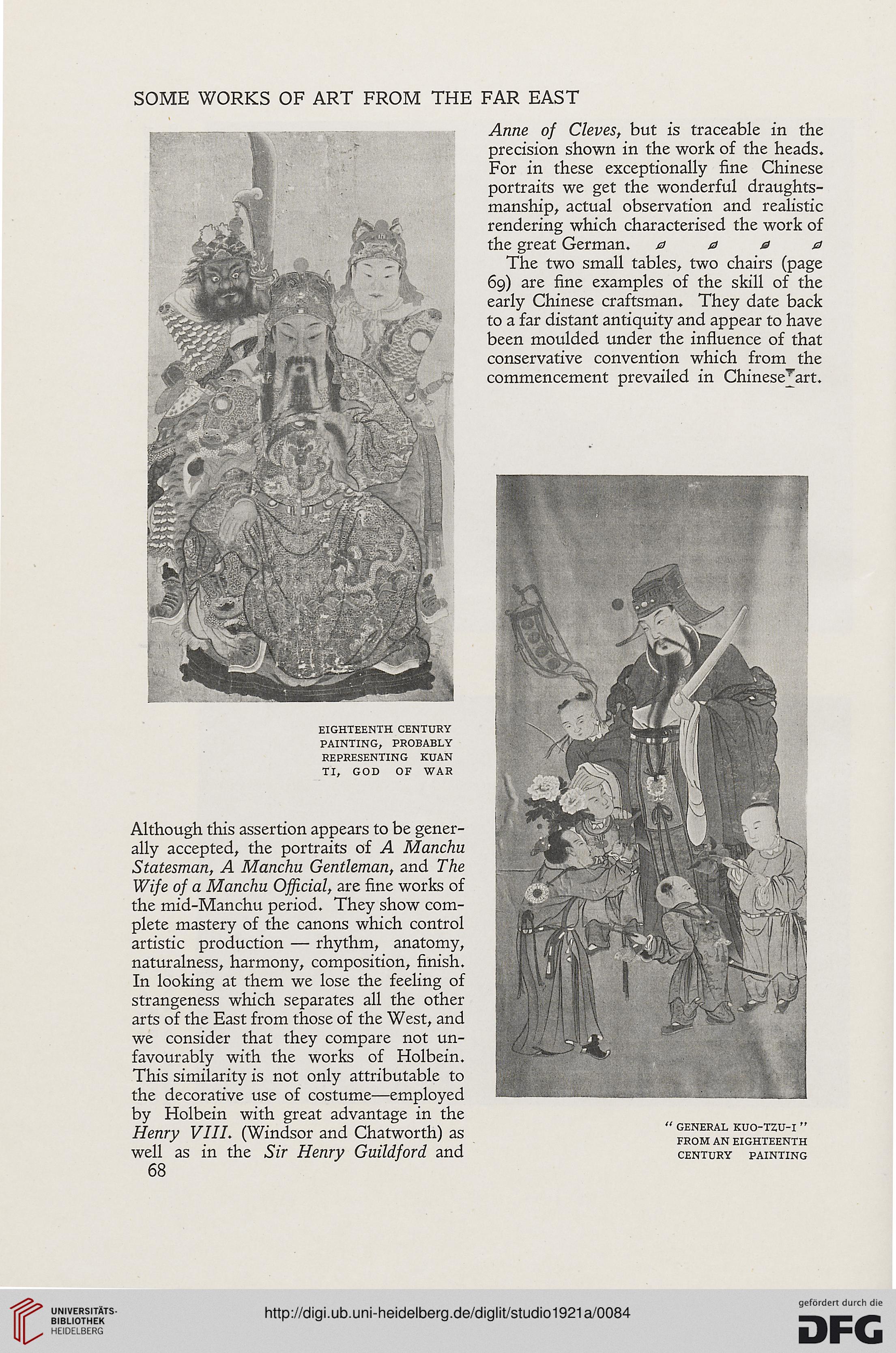SOME WORKS OF ART FROM THE FAR EAST
EIGHTEENTH CENTURY
PAINTING, PROBABLY
REPRESENTING KUAN
TI, GOD OF WAR
Although this assertion appears to be gener-
ally accepted, the portraits of A Manchu
Statesman, A Manchu Gentleman, and The
Wife of a Manchu Official, are fine works of
the mid-Manchu period. They show com-
plete mastery of the canons which control
artistic production — rhythm, anatomy,
naturalness, harmony, composition, finish.
In looking at them we lose the feeling of
strangeness which separates all the other
arts of the East from those of the West, and
we consider that they compare not un-
favourably with the works of Holbein.
This similarity is not only attributable to
the decorative use of costume—employed
by Holbein with great advantage in the
Henry VIII. (Windsor and Chatworth) as
well as in the Sir Henry Guildford and
68
Anne of Cleves, but is traceable in the
precision shown in the work of the heads.
For in these exceptionally fine Chinese
portraits we get the wonderful draughts-
manship, actual observation and realistic
rendering which characterised the work of
the great German. 0000
The two small tables, two chairs (page
69) are fine examples of the skill of the
early Chinese craftsman. They date back
to a far distant antiquity and appear to have
been moulded under the influence of that
conservative convention which from the
commencement prevailed in Chinese^art.
" GENERAL KUO-TZU-I "
FROM AN EIGHTEENTH
CENTURY PAINTING
EIGHTEENTH CENTURY
PAINTING, PROBABLY
REPRESENTING KUAN
TI, GOD OF WAR
Although this assertion appears to be gener-
ally accepted, the portraits of A Manchu
Statesman, A Manchu Gentleman, and The
Wife of a Manchu Official, are fine works of
the mid-Manchu period. They show com-
plete mastery of the canons which control
artistic production — rhythm, anatomy,
naturalness, harmony, composition, finish.
In looking at them we lose the feeling of
strangeness which separates all the other
arts of the East from those of the West, and
we consider that they compare not un-
favourably with the works of Holbein.
This similarity is not only attributable to
the decorative use of costume—employed
by Holbein with great advantage in the
Henry VIII. (Windsor and Chatworth) as
well as in the Sir Henry Guildford and
68
Anne of Cleves, but is traceable in the
precision shown in the work of the heads.
For in these exceptionally fine Chinese
portraits we get the wonderful draughts-
manship, actual observation and realistic
rendering which characterised the work of
the great German. 0000
The two small tables, two chairs (page
69) are fine examples of the skill of the
early Chinese craftsman. They date back
to a far distant antiquity and appear to have
been moulded under the influence of that
conservative convention which from the
commencement prevailed in Chinese^art.
" GENERAL KUO-TZU-I "
FROM AN EIGHTEENTH
CENTURY PAINTING




